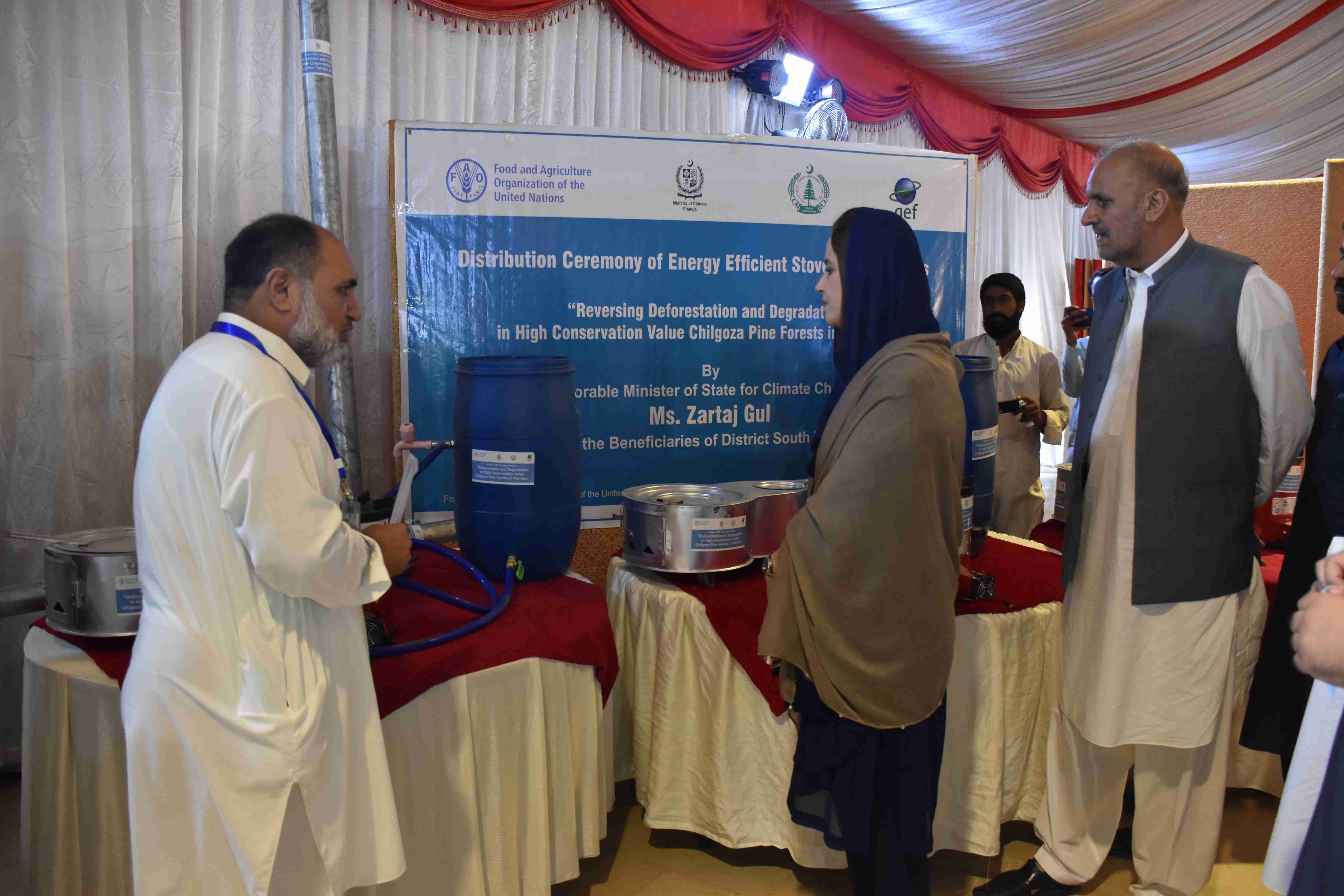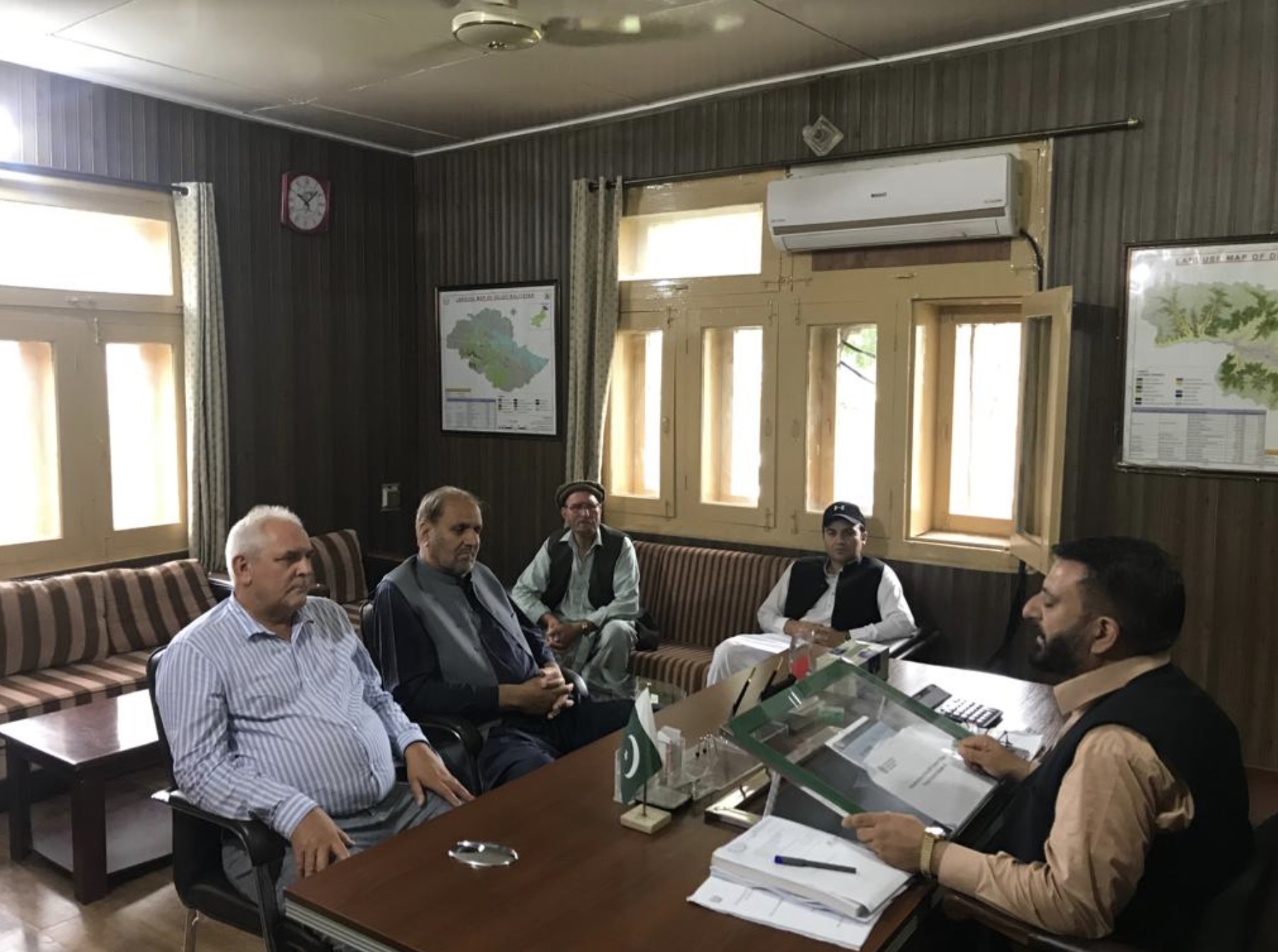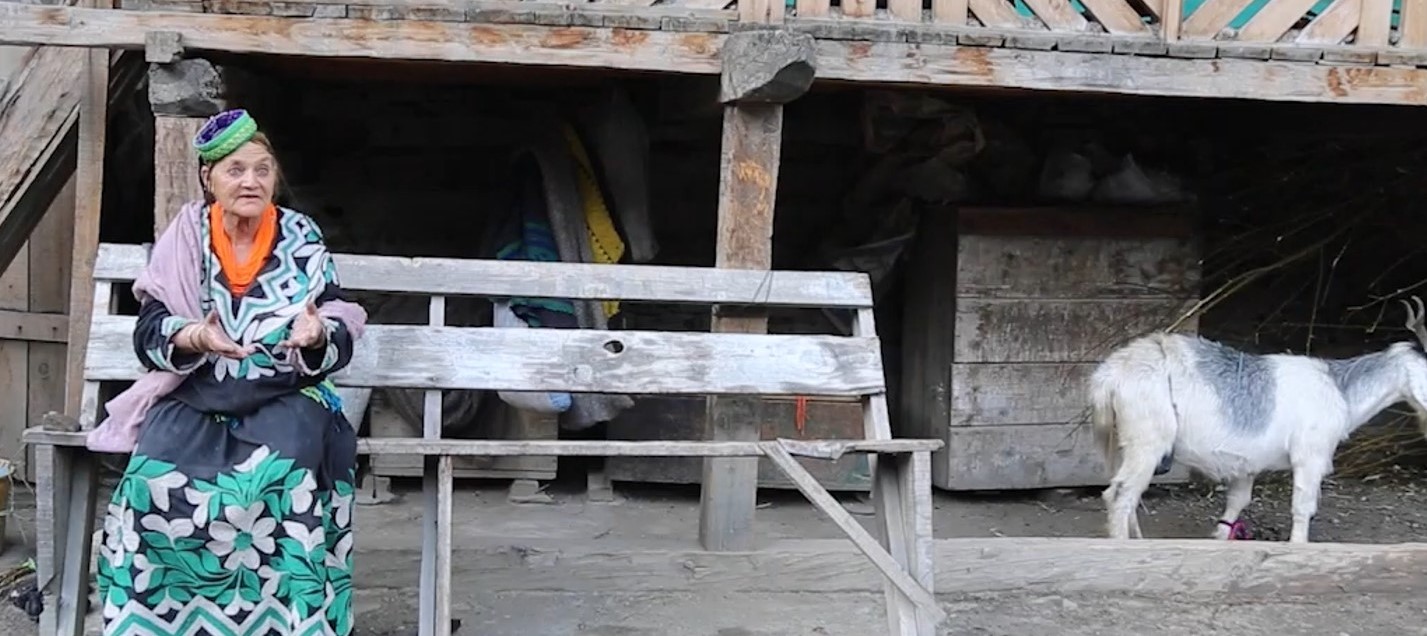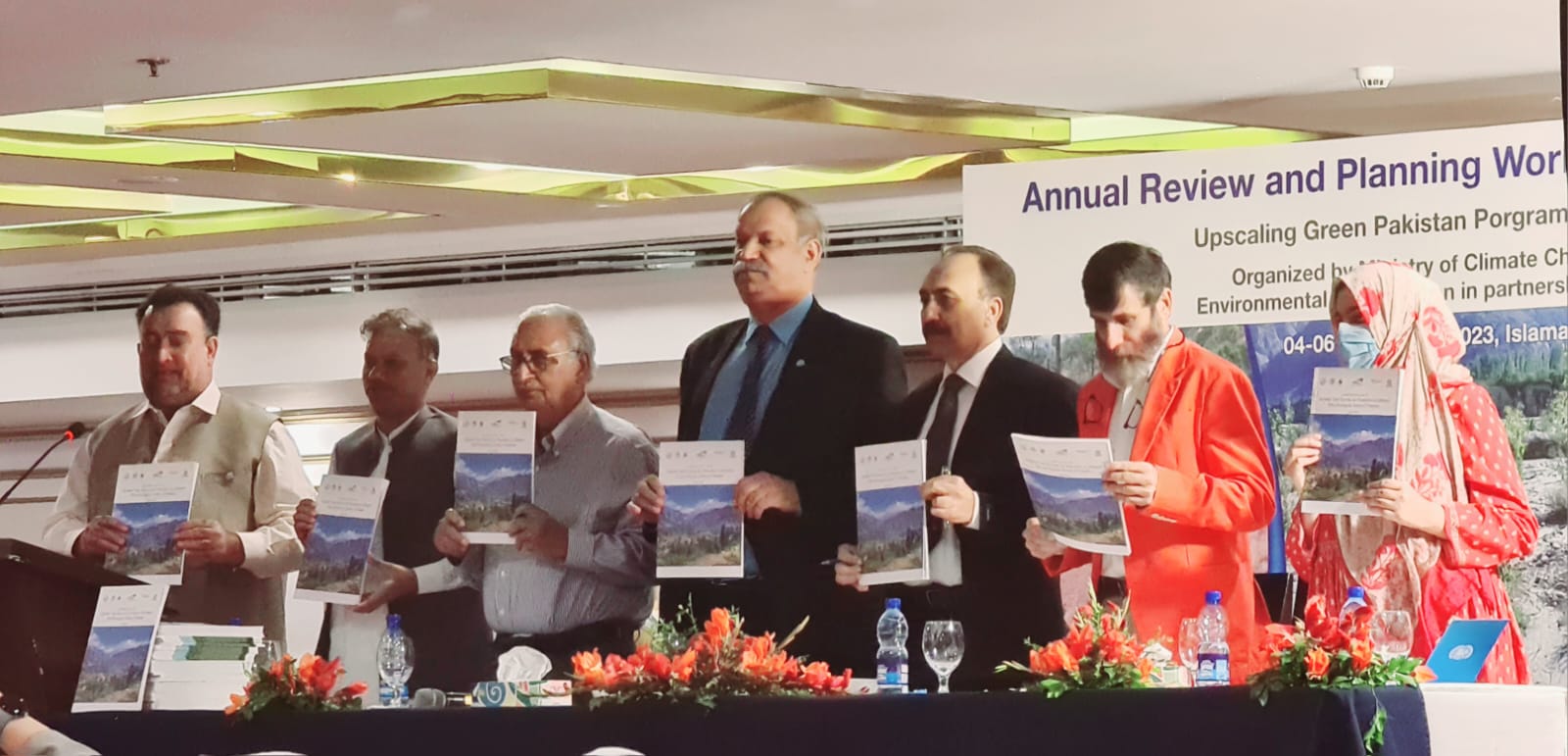Energy-efficient solutions to reduce deforestation in Pakistan's Pine Forests
Promoting energy-efficient stoves and gasifiers to reduce deforestation in the highly degraded pine forest ecosystem in Pakistan.
The TRI Pakistan project is helping to improve local livelihoods through increased productivity and enhanced services and functions of chilgoza forests.
The chilgoza forests in Pakistan are situated in dry temperate areas, which are primarily among rugged mountains. These forests are either pure stands of chilgoza pine (Pinus gerardiana), or mixed stands with other coniferous species. Chilgoza pine is native to northern Pakistan and a high-value tree best known for its edible pine nuts, which are rich in carbohydrates and proteins. In addition to providing various environmental services, this species plays an important role in the livelihoods of communities living close to the forest. Harvested pine nuts are one of the major NTFPs of Pakistan and are primarily traded internationally.
Around the world, high-value forests like the chilgoza pine forests are under threat, which puts these benefits in jeopardy. The threats in the form of deforestation and forest degradation are evident in Pakistan. Deforestation is a particular concern in Sherani Balochistan, as 100 000 mature trees consisting of approximately 21 200 m3 (cubic metres) of timber, were cut down for timber between 1994 and 2014, and around 21 percent of forest cover has been lost in 20 years. Deforestation in all four regions is particularly rampant near more populated areas, roads and rivers, but even remote areas have been encroached upon during dam construction and oil and gas explorations.
Traditionally, in communities’ rights to hold forests, the control of deforestation and forest degradation always remains an issue. The provincial forest departments in all selected regions, except Chitral, have limited reach; limited administrative control; and limited financial, legal and scientific decisions. On the other hand, due to traditional and unsustainable harvesting of NTFPs, existing gaps in the value chain and issues with marketing, the communities of high-value forests remain below the poverty line.
 Fuel-efficient stoves distribution ceremony in South Waziristan.
Photo: FAO/Daud Shah
Fuel-efficient stoves distribution ceremony in South Waziristan.
Photo: FAO/Daud Shah
To address these issues on the request of the MoCC and the provincial forest departments, FAO launched the project “Reversing Deforestation and Degradation in High Conservation-Value, Chilgoza Pine Forests in Pakistan” funded by the GEF. This project, part of TRI, aims to improve local livelihoods through increased productivity and enhanced services and functions of chilgoza forests in Pakistan. The project is operative in the Sherani District of Balochistan, the South-Waziristan District of the former Federally Administered Tribal Areas, the Chitral District of Khyber Pakhtunkhwa (KPK) and Diamer District of Gilgit-Baltistan, and focuses on the FLR approach. The project aims to restore ecological integrity while improving human well-being through multifunctional landscapes. Building upon the definition by AFR100, FLR is more than just planting trees, it is restoring a whole landscape to meet present and future needs and to offer multiple benefits and land uses over time.
The FLR approach can provide valuable models of how to integrate biodiversity conservation, cultural heritage protection and sustainable use of resources. It is an approach that brings conservation “home” to places where people live and work. An approach like this, which emphasizes lived-in landscapes, should not be seen to diminish the importance of strictly protected areas, nor should it be viewed as a rejection of other conservation models. Instead, it is a complementary model, part of a range of strategies for achieving conservation objectives. This approach is particularly appropriate in settings where biodiversity and cultural practices are linked and management must accommodate traditional uses, land ownership patterns and the need to sustain local livelihoods. To showcase the potential of forest restoration in tackling the multiple challenges, both environmental and developmental, the FLR approach was selected to be demonstrated in the project landscape through the implementation of TRI in Pakistan.
Using the FLR approach, four options were identified and prioritized: a) assisted natural regeneration enclosures; b) agroforestry and farm forestry; c) communities’ engagement in conservation and protection, and development of linkages with provincial forest departments; and d) value chain development of goods and services produced from chilgoza forests.
Due to the lack of alternate energy sources in the remote mountainous areas, there is heavy pressure on the use of trees and vegetation for fuelwood. According to a survey from Deutsche Gesellschaft für Internationale Zusammenarbeit GmbH (GIZ), 85 percent of the forests were damaged due to fuelwood collection, and only 15 percent for illicit timber harvesting.4 In this regard, the project provided fuel-efficient stoves to the community, which has resulted in reduced fuelwood consumption, and thus a lesser number of trees cut.
"The use of improved fuel-efficient stoves is important to save forests. By promoting fuel-efficient stoves we can save thousands of trees," said Dr Faizul Bari, Natural Resources Manager Adviser, FAO Pakistan.
Wood consumption for fuel, timber and livelihoods plays a role in forest degradation. To minimize this effect, the project focuses on two types of activities: agroforestry (which copes with fuelwood, livelihoods and timber issues) and innovative fuel-efficient technologies (fuel-efficient stoves and gasifiers). So far, agroforestry interventions have been promoted over 953 ha (in total, 1.12 million plants) in all four regions to support families dependent on forest services, and 2 100 fuel-efficient stoves and gasifiers, and 6 tonnes of pellets have been provided. An average family of 8–10 people consume 18 580 kg (kilograms) of wood for domestic use annually, while the average weight of a tree in the chilgoza forest ecosystem is about 1 tonne. Thus, each year, an average family consumes the equivalent of 18.5 trees.
 A meeting among stakeholders in August 2022.
Photo: FAO Pakistan
A meeting among stakeholders in August 2022.
Photo: FAO Pakistan
In normal conditions, an improved stove consumes 49 percent less energy than a traditional stove. These improved stoves function very well with small bushes and do not need hardwood. As such, the 2 100 stoves provided in the last 3 years saved 18 900 trees from ash. Therefore, not only has the fuelwood consumption been reduced, but so has the workload on women and children, while health, hygiene and living standards have improved. On average, this provides an overall benefit to the chilgoza forest ecosystem equivalent to about 4 306 ha of forest. According to one of the energy-efficient stove recipients in the valley in Chitral, while enjoying heating and warm water, there has been a saving of 35 percent on fuelwood when cooking.
To expand the TRI project in Pakistan, the community identified four key areas for improvement of their livelihoods, which will be addressed via ongoing small grants in 2023. These priority areas include Rhode Grass Demo Plots, honeybee keeping (apiculture) and medicinal plant harvesting techniques (including the provision of tool kits and techniques). Overall, 425 grants will be distributed among beneficiaries (including 150 honey beekeeping kits, 200 fodder demonstration plots and 75 medicinal plant harvesting tool kits).
This story is from TRI Year in Review 2022



